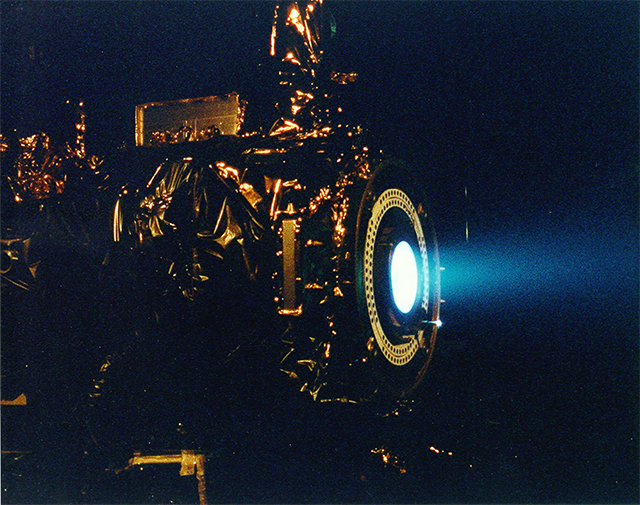For those
who are unfamiliar to the EM drive, here’s the crash course. An EM drive, also
known as a radio frequency resonant cavity thruster, is theorized to be able to
generate thrust without the need of a propellant. The thrust is of the electromagnetic
world that is produced from bouncing microwaves back and forth inside a cavity.
Think of it
like this-- a person is sitting inside of a box and they are faced with a task
to make the box move. They do so by pushing out the walls and moving around
inside of the box. Also, to top it all off, the total momentum generated by the
drive increases as it moves.
If an EM
drive is to enter our current world of reality, it would be revolutionary, to
say the least. Faster space travel and cheaper spaceflight costs would be
guaranteed.
China
announcing such a great feat has raised some eyebrows. Before the release of
the video, there were two breakthroughs in the world of the EM drive. The first
was a peer-reviewed NASA paper claiming the very real possibility of the
successful operatives of such a machine... at the very least hypothetically.
The second was China claiming that the operatives of the EM drive one hundred
percent possible.
However,
after the release of the NASA peer-reviewed paper, it was deemed skeptical.
However awesome the possibility of an EM drive in our current world, there is a
downside... the EM drive goes against Newton’s third law of motion which is why
many are skeptical towards the NASA peer-reviewed paper and of China releasing
the video.
Newton’s
third law of motion that states that to everything there is an equal and
opposite reaction which, in our Universe, based off of that law, is impossible
to generate without a propellant.
Brice
Cassenti, advanced expert of propulsions of the University of Connecticut
explained why an EM drive is to raise eyebrows: “Action and reaction is a
direct result of the conservation of momentum, the violation of such a basic
law as the conservation of momentum would invalidate much of the basis for all
of physics as we know it.”
As lovely as
it sounds, the likelihood of this EM drive being the one to revolutionize
physics as a whole and create a whole new era of space travel is highly
improbable. Also, some such as Yahoo news (as though they’re entirely
credible...) wrongly describe the EM drive as a warp drive.
A warp drive
is a faster-than-light spacecraft propulsion system that is oftenly used in
Sci-Fi works such as Star Trek. Common sense deems the likelihood of a warp
drive basically impossible. The reason being is that the speed of light is the
“speed limit” of our Universe, as Neil Degrasse Tyson put it. Also, reference
the theory of relativity to further confirm how improbable it is to travel
faster than the speed of light. Sorry, folks.
Technology
such as an EM drive, currently seems worlds away. As a result, unfortunately,
our space travelling adventures are currently situated in the current, classic
rocket propulsion technology. But, shed no tears-- new tech is being developed
as your eyes scan the lines of this article.
For example,
depending on how Earth and Mars align, one trip of SpaceX’s Interplanetary
Transport System could be shortened to a mere 80 days. Elon Musk, CEO and
founder of SpaceX, believes in and strives to shorten the trip down to 30 days.

Comments
Post a Comment